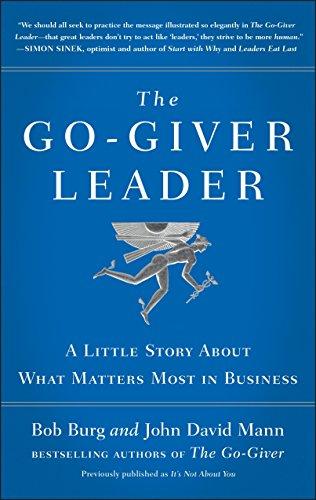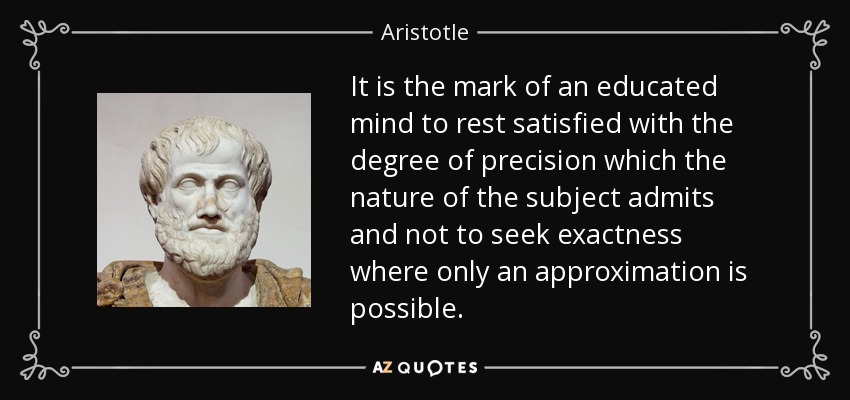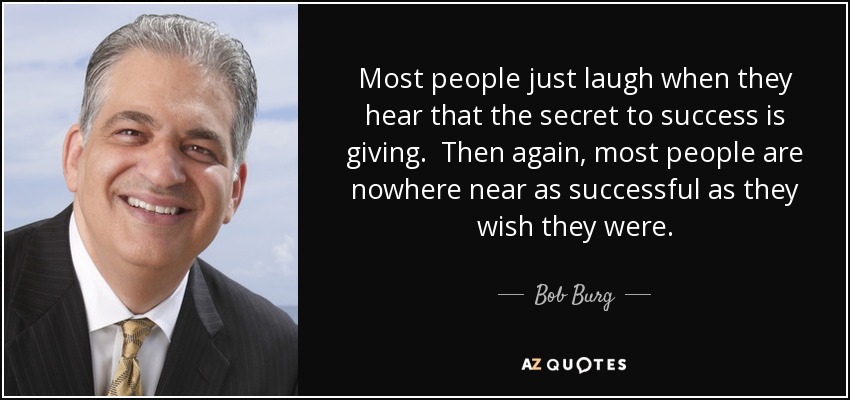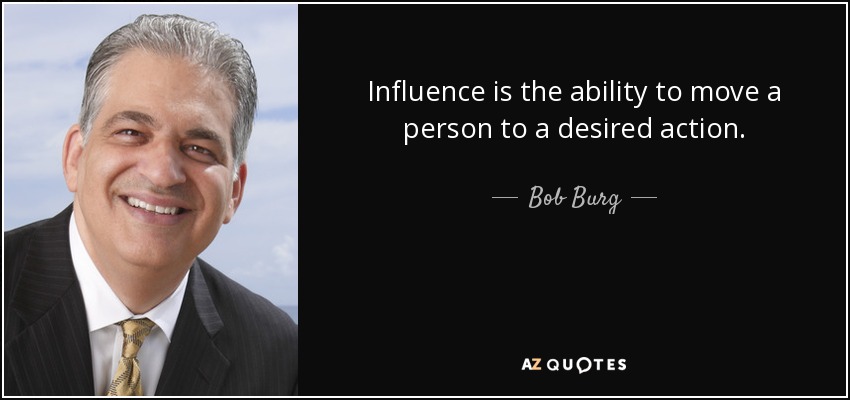Click here to return to Blog Post Intro

Where do the Five Keys to Legendary Leadership come from?
The authors explain, “Like the Five Laws of Stratospheric Success in The Go-Giver, the Five Keys are drawn from our experiences and observations, in business and in life, and from the wisdom and experience of teachers. The first three—leading from the head, the heart, and the gut—have been with us for years. The fourth—stand for something: lead with your soul—is a little different; like the fourth Law of Stratospheric Success in The Go-Giver (the Law of Authenticity), it is more personal and intimate. It gives the first three Keys more depth. As with the fifth Law in The Go-Giver, Key #5—practice giving leadership—came as something of a surprise to us and emerged gradually from the process of writing the story. (We knew there was most likely a fifth Key; we just didn’t know exactly what it would look like.) Key #5 is what makes the other four work. Taken together, they are four fingers and thumb. Leadership is like love: when you hoard it, it withers and dies, yet when you give it away, it multiplies exponentially.”
KEYS TO LEGENDARY LEADERSHIP
KEY #1. HOLD THE VISION
It’s easy to inspire and motivate people—for the moment. It’s easy to say, “Hold a vision.” But the hard part isn’t the vision. Anyone can come up with a vision. The hard part is the holding.
The single biggest challenge to any organization is the constant cloud of fear and doubt that swirls around the heads of the people involved. As a leader, your job is to hold fast to the big picture, to keep seeing in your mind’s eye, with crystal clarity, where it is you’re going—that place that right at this moment exists only in your mind’s eye. And to keep seeing that, even when nobody else does.
To do so, lead with your mind.
KEY #2. BUILD YOUR PEOPLE
Give people something good to live up to—something great—and they usually will. In fact, often they’ll even exceed those expectations.
What is the key to success? Strategies and plans, projections and road maps—they don’t make things move, they don’t make things happen. If you’re going to get anything done, you have to engage people. And that starts in the heart.
So, lead from the heart.
As a leader, the more you yield, the more power you have. The substance of influence is pull . . . not push; and tact is the language of strength. And don’t react—respond.
When you think about Customer Service, don’t make a distinction. Customers, employees, employees’ families, the community… It’s all just Service.
As Winston Churchill explained, “I have found that the best way to get another to acquire a virtue is to impute it to him.”
KEY #3. DO THE WORK
One of the secrets to success is “getting muddy.” Use your own hands, learn the nuts and bolts, from the ground up. So, know your pegs and shims. Stay grounded.
Someone once relayed a story of a Sergeant in the military who said, “Lieutenant, after your men have been fed, if there’s any food left, then you will eat. And later, after all your troops have been bedded down, if there’s a place for you to lie down, then you will sleep.” (This theme was reiterated in Simon Sinek’s Leaders Eat Last.)
If you want to be hugely successful, you have to stay hugely humble. People often equate humility with a lack of confidence or self-esteem, or think that being humble means being weak. They have it backwards. The more humble you are, the more personal power you have.
The word humility shares a common root with humus. Being humble means being aware of your connection with the dust of the earth. The soil is the source of everything we have. Think of it this way, “Remember your muddy beginnings, and you can accomplish anything.”
People who achieve great things that the world will never forget, start out by accomplishing small things that the world will never see. Great leaders don’t expect anyone else to do anything they haven’t done themselves. They get dirt under their nails and mud on their boots…
Consider these examples:
- Abraham Lincoln knew law. He’d practiced it in freezing-cold, bare-floored, small-town courtrooms. So did Gandhi. They were both able to emancipate millions—but only because they knew the feel of the craft in their hands.
- George Washington knew the land.
- As a boy, Sam Walton milked the family cow and sold the surplus milk to neighbors.
- Bill Gates spent thousands of hours as a teenager programming computers.
You don’t have to be brilliant. The brilliant will take care of itself. You can’t worry about the outcome. Just do the work. And not only because it needs doing, but also because that’s the only way you’ll generate real respect.
Ultimately lead from your gut. And trust yourself.
KEY #4. STAND FOR SOMETHING
Someone once advised, “Never let them see you sweat when you speak before large audiences. If people sense you’re not in control, they’ll eat you for lunch. When you give your talk, it’s all right to be nervous—just don’t let it show.”
That advice is abysmal and awful. Don’t try to pretend to be someone you are not. One speaker who received that advice said, “The next time I spoke before a group, my nervousness was even greater—and I told them so. ‘I just want you all to know, I am petrified’ was my opening line. ‘I hope you enjoy the next forty-five minutes. Myself, I’ll be closing my eyes—let me know when it’s over.’ Everyone in the hall laughed. And you know, I could feel the audience rooting for me, reaching out to help me feel at ease. Instead of being merely the audience, they became my partners.”
Leadership is not something you can put on and take off, like a set of clothes. Your capacity to influence is not something you can rehearse, like a speech in a play.
People, contrary to popular belief, are not fools. No matter what front you put on, they will read you, consciously or unconsciously—the you behind the words. Economies rise and fall. Circumstances change. We bleed. We heal. We grow. Sometimes we end up in Critical Care. We can’t control any of it, not really. What we can control is who we are.
What you have to give, you offer least of all through what you say; in greater part through what you do; but in greatest part through who you are.
So, what do you have to offer? Competence is simply the baseline, the thing that puts you in the game. It matters, but it’s a dime a dozen. Character, though is that rare, precious gem, and anyone who possesses it is worth a great deal to the world around him. You can judge someone’s character by what he does when no one’s watching.
Character comes from an old Greek word for scrape or scratch. It came to mean “an engraved mark” and, eventually, “a defining quality.” Character is what happens when life scratches itself onto your soul. So, lead with your soul.
The Language of Strength
There is a difference between reacting and responding. Whether you react or you respond, it tends to foster the same behavior in the other person.
Nothing ruins a good negotiation like one of the participants reacting. If more people responded instead of reacting, the world would be…
Yielding is giving—but not giving up, which are two very different things. Abraham Lincoln was once told by a reporter that another government official had sharply criticized him. What did the President have to say about that? “I have great respect for the man,” replied Lincoln, “and if he has concerns about me, there must be some truth to it.”
The criticism was intended to draw Lincoln into a skirmish that would have distracted him from other business. Instead, his comment not only deflected the critique but also won the hearts of both friends and foes—and allowed the president to keep his focus on the more important issues at hand. Lincoln’s maneuver was what a boxer calls a parry.
Tact is not the same thing as compromise. Tact, in fact, is the language of strength. Tactful and tactile both come from the same Latin word, which is the word for touch. Having tact literally means being in touch with the other person. And when you treat someone with tact, it allows them to stay intact. Ultimately, how effective you are, how influential you are, comes down to your intention. What are you focused on? Your benefit, or theirs?
Getting people to do what they truly want is an achievement. As someone said, “Your influence is determined by how abundantly you place other people’s interests first.”
When we think of “Standing for Something,” we can learn a lot from the Martial Arts Dojo. Here are the four pillars of the Dojo:
- Mind. The battle can be over before you land the first blow. It is waged first and foremost in your mind. See the entire sequence unfold in your mind’s eye before you make the first move. See the other contestant on the floor, subdued and unhurt.
- Connection. It is possible to fight a good match only when you join with the person you are fighting. Rather than seeing your sparring partner as an opponent to be beaten, regard him as a collaborator, working together with you toward a shared conclusion.
- Flow. Don’t overthink. See the match in your mind, but once you are in motion, let go and trust your training. Trust your instincts. Don’t try to control the sequence of events. Let it unfold.
- Honor. The bow you make to each other before each match is not an empty gesture, and is far more than mere tradition. Your form, your skill, your execution—these are all important. But more important than any of these is your being. By this we mean your sense of respect, as well as self-worth, of dignity and character. How you behave toward yourself, your opponent, your team, and your dojo.
Translating the Dojo Principles to the Organization:
- Vision. Paint a picture of your organization’s story, from its starting days to its stunning ascendency, through its troubled times, and on into the chapter that lay ahead—the exciting recapture of its former glory.
- Empathy. Put a human face on that vision, sharing a few stories of individuals at another company that had struggled, and how a boost subsequently changed their lives.
- Grounding. Make sure you do the work.
- Soul. Make an impassioned discourse on how personally committed you are to seeing the vision work out in the best interests of all involved and how you would not rest until that had happened to everyone’s satisfaction.
Leaders hold a vision. Leaders care about their people. Leaders get their hands dirty and their boots muddy, do the work and make the tough decisions. And leaders stand for something.
KEY #5. PRACTICE GIVING LEADERSHIP
Picture the word “L E A D” with two curved arrows, indicating that the L and the D were changing places. Underneath, show the new word that this change produces: “D E A L”
This is what happens to so many leaders and people of influence. Kings, presidents, heads of religious organizations and great corporations… It can happen to anyone with a following of any size or number. After a time, they start getting it backwards. They absorb all that trust and faith, the sense of all those people looking to them for guidance, inspiration, and constancy, and they confuse the container with the contents.
The moment you begin thinking that it’s all about you, that you’re the deal, is the moment you begin losing your capacity to positively influence others’ lives. In a word, to lead.
The best way to increase your influence is to give it away.
Whatever great parenting looks like, it is not about the parent. Great teaching is not about the teacher. Great coaching is not about the coach. And great leadership? You can fill in that blank.
Are you someone who knows how to take leadership in tough circumstances? Sometimes, it’s not about taking leadership. Sometimes, it’s about giving leadership. Giving leadership is about empowering others. About holding them up. And not only those in what you might call “leadership positions.” You can give leadership to your child, to a member of your work group, to a friend. To anyone. When you believe in someone, when you promote them, champion them, respect their ideas, you give them leadership. And it’s also a special kind of leading. Like servant leadership. Giving leadership is a leadership style, but also more than that. It’s a way of being.
Your influence is determined by how abundantly you place other people’s interests first.
Taking leadership, as in grabbing the reins, seizing control, asserting dominance, when that means squashing or walking over others, can be entirely the wrong thing to do. Just as the authors noted in The Go-Giver: “Are you saying it’s bad to be a go-getter?” Not at all—we love go-getters! Go-getters show initiative, take action, get things done. The ideal thing is to be a go-getter…and a go-giver. In the same way, it’s great to be someone who is not afraid to take leadership when the situation calls for it. But it’s even better to be someone who is bold enough to take leadership—and bold enough to give it, too.
You can look at giving leadership in two ways:
- It’s a noun (or more accurately, an adjective); like servant leadership, a particular kind of leadership. A leadership style that focuses not on holding oneself up and seizing the limelight but on holding up other people.
- It’s also a verb: to give leadership to others.
The mark of a great leader is that you are able to put your ego aside and listen to the people around you. It’s not about “taking leadership”—conquering others or convincing them about your way of thinking.
Great leadership is never about the leader. The best way to increase your influence is to give it away. The more you give, the more you have.
Give leadership, and in so doing, nudge the world in a positive direction.




